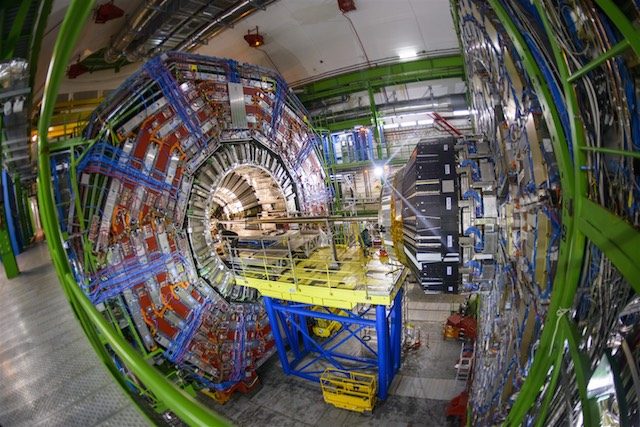SUMMARY
This is AI generated summarization, which may have errors. For context, always refer to the full article.

MANILA, Philippines (UPDATED) – The world’s biggest particle collider is back in operation after a two-year upgrade, the European Organization for Nuclear Research (CERN) announced Sunday, April 5.
Engineers at the Large Hadron Collider (LHC) introduced two proton beams, the source material for sub-atomic smashups, as part of the recommissioning process. The first beam was started at 10:41 am local time, followed by the second beam going the opposite direction at 12:27 pm, CERN said.
The beams were injected into the tunnel at a lower energy of 450 gigaelectonvolts (GeV), and in the coming days, CERN said operators will check the systems before gradually increasing the energy of the beams.
“After two years of effort, the LHC is in great shape,” Frédérick Bordry, the center’s head for Accelerators and Technology, said in a statement.
“CERN’s heart beats once more to the rhythm of the LHC,” said CERN Director General Rolf Heuer.
A short-circuit in one of the LHC’s magnet circuits last Saturday, March 28, had delayed the eagerly-awaited restart.
The LHC comprises a 27-kilometer (17-mile) ring-shaped tunnel straddling the Franco-Swiss border, in which two beams of protons are sent in opposite directions.
Powerful magnets bend the beams so that they collide at points around the track where 4 laboratories have batteries of sensors to monitor the smashups.
The sub-atomic rubble is then scrutinized for novel particles and the forces that hold them together.
‘Back in the driver’s seat’
In 2012, the LHC discovered the Higgs Boson, the particle that confers mass, earning the Nobel prize for two of the scientists who, back in 1964, had theorized its existence.
Since then, the giant machine has been undergoing an upgrade to beef up its maximum collision capacity from 8 teraelectronvolts (TeV) to 14 TeV – 7 TeV for each of the two counter-rotating beams.
“[The] most important step is still to come when we increase the energy of the beams to new record levels,” said Bordry.
CERN said the LHC will operate at “unprecedented energy,” at 6.5 TeV per beam – making the proton-proton collisions at 13 TeV before the summer.
During the next phase of the LHC program, researchers will probe a conceptual frontier called new physics, with enigmatic “dark matter” the big area of interest.
Ordinary, visible matter comprises only about 4% of the known Universe.
“[Physicists] will be putting the Standard Model of particle physics to its most stringent test yet, searching for new physics beyond this well-established theory describing particles and their interactions,” the center said.
“The return of beams to the LHC rewards a lot of intense, hard work from many teams of people,” Paul Collier, head of CERN’s Beam Department, said in a statement.
“It’s very satisfying for our operators to be back in the driver’s seat, with what’s effectively a new accelerator to bring on-stream, carefully, step by step,” Collier added. – With reports from Agence France-Presse and KD Suarez / Rappler.com
Add a comment
How does this make you feel?
There are no comments yet. Add your comment to start the conversation.